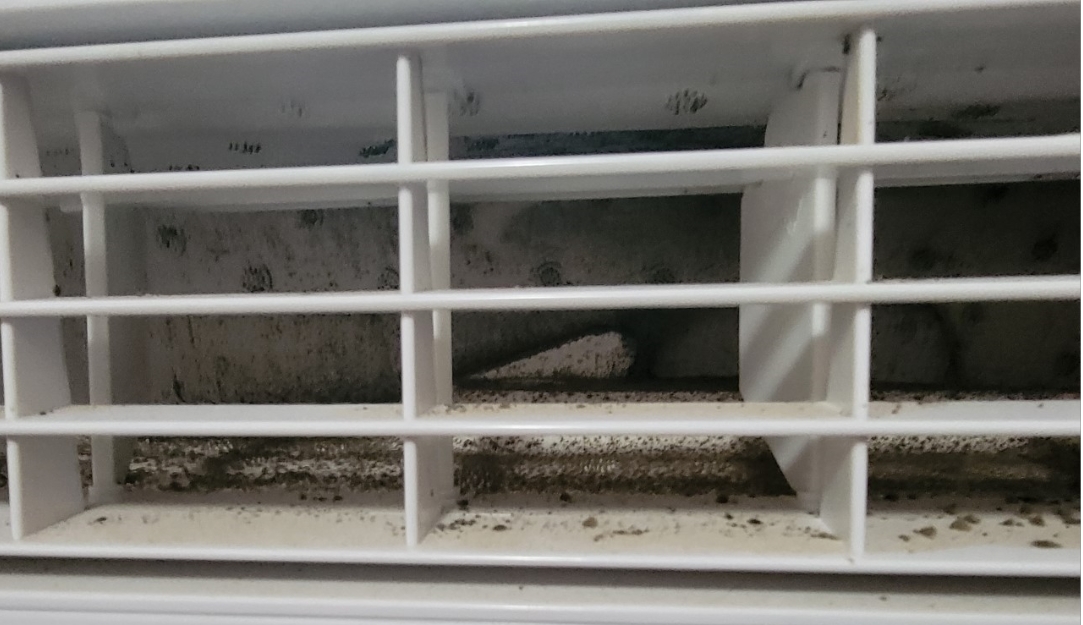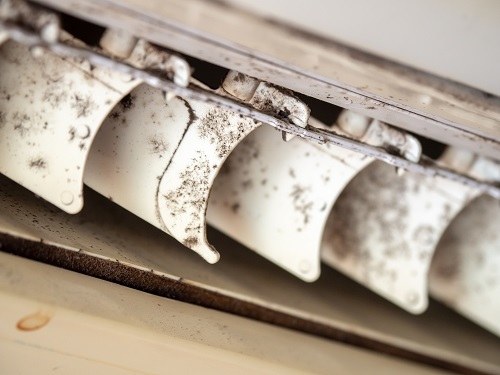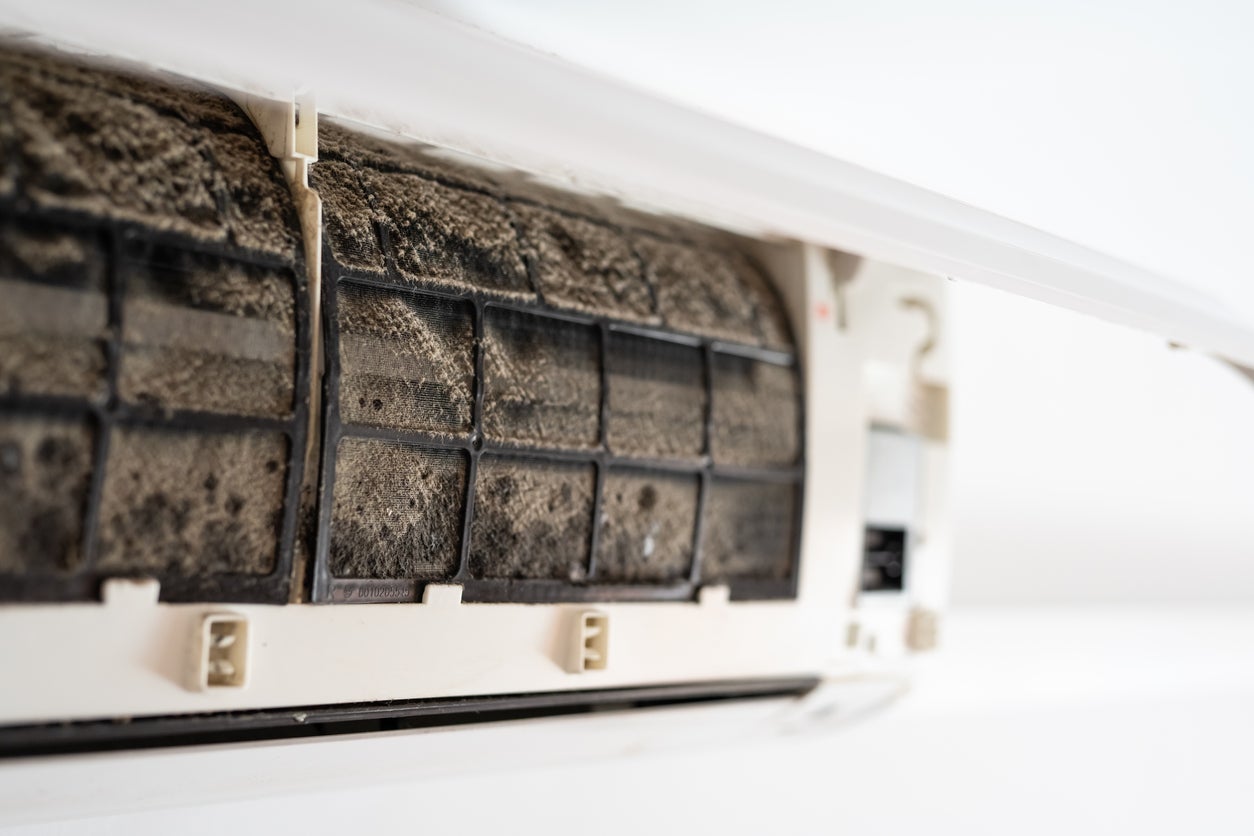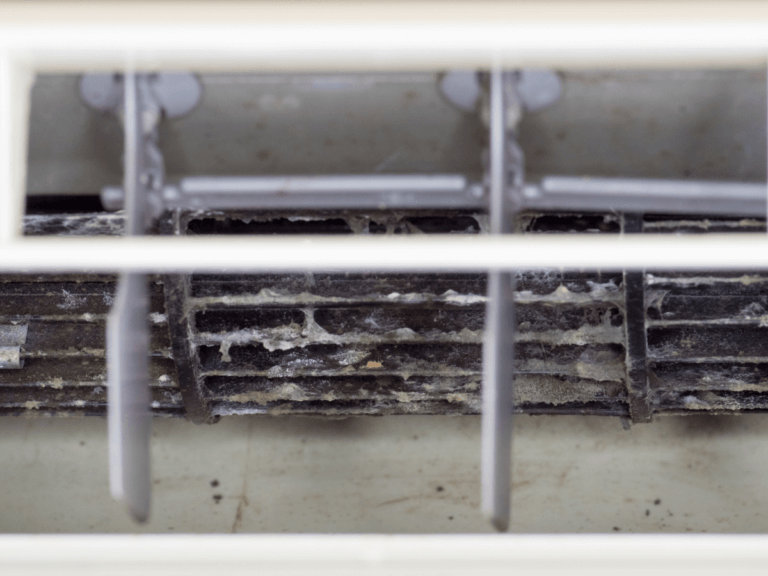Black Mold Inside Window Air Conditioner

Black mold in a window air conditioner is a common problem, but it can also be a serious health hazard. This guide provides a comprehensive overview of black mold inside window AC units, covering identification, health risks, causes, removal, prevention, and when to seek professional help.
Identifying Black Mold in Your Window AC Unit
Before you can address the problem, you need to identify if the substance inside your AC unit is indeed black mold. Not all dark discoloration is black mold, but it's important to treat any potential growth seriously.
Visual Inspection: The most obvious sign is the presence of a dark, often slimy or fuzzy substance. It might appear black, greenish-black, or dark gray. Look closely at the coils, the drain pan, and any areas with visible moisture.
Smell: Black mold often has a musty, earthy odor. If you detect a persistent unpleasant smell coming from your AC unit, it's a red flag.
Location: Black mold thrives in damp, dark environments. It's commonly found in areas of the AC unit where condensation accumulates, such as the drain pan or around the cooling coils. Because a window AC unit is subject to temperature extremes and the collection of condensation, it is an ideal place for mold to grow.
Differentiating Mold from Other Discoloration
Dirt, dust, and mildew can also cause discoloration inside an AC unit. Here's how to tell the difference:
Texture: Mold often has a fuzzy or slimy texture, while dirt and dust are usually dry and powdery. Mildew is typically a flat, powdery growth.
Color: While black mold is dark, other types of mold can be white, green, or brown. Dirt and dust are usually gray or brown.
Smell: Mold typically has a musty odor, while dirt and dust usually don't have a strong smell.
If you're unsure whether the substance is mold, it's best to err on the side of caution and treat it as if it is.
Health Risks Associated with Black Mold
Black mold, specifically Stachybotrys chartarum, can produce mycotoxins, which are toxic substances that can pose health risks to humans and pets. The severity of the health effects can vary depending on the individual's sensitivity, the extent of the mold exposure, and the duration of exposure.
Respiratory Problems: Mold spores can trigger allergic reactions and asthma symptoms, such as coughing, wheezing, shortness of breath, and nasal congestion. Prolonged exposure can lead to more severe respiratory problems.
Allergic Reactions: Even if you don't have asthma, you can still experience allergic reactions to mold, including skin rashes, itching, watery eyes, and sneezing.
Neurological Symptoms: In some cases, exposure to mycotoxins can cause neurological symptoms such as headaches, memory loss, difficulty concentrating, and fatigue.
Other Symptoms: Other potential symptoms of mold exposure include eye irritation, throat irritation, sinus infections, and a weakened immune system.
It's important to note that not everyone is equally susceptible to the effects of mold. Infants, children, the elderly, and individuals with compromised immune systems are generally more vulnerable.
Causes of Black Mold Growth in Window AC Units
Understanding the causes of mold growth is crucial for preventing future infestations. Mold needs three things to thrive: moisture, a food source, and a suitable temperature.
Moisture: Window AC units are prone to condensation, which creates a damp environment ideal for mold growth. Condensation occurs when warm, humid air comes into contact with the cold surfaces of the cooling coils.
Food Source: Mold can feed on organic materials such as dust, dirt, pollen, and even the components of the AC unit itself.
Temperature: Mold thrives in temperatures between 40°F and 100°F (4°C and 38°C), which is a common range for window AC units.
Poor Ventilation: Inadequate airflow can trap moisture inside the AC unit, creating a favorable environment for mold growth. This can happen if the AC unit is not properly installed or if the filters are clogged.
Dirty Filters: Dirty filters can restrict airflow and trap moisture, contributing to mold growth. They also provide a food source for mold.
Removing Black Mold from Your Window AC Unit
If you discover black mold in your window AC unit, it's important to take action to remove it safely and effectively.
Safety Precautions: Before you start cleaning, protect yourself from mold exposure by wearing gloves, a face mask (N-95 or higher), and eye protection. Work in a well-ventilated area.
Gather Supplies: You'll need the following supplies:
- Protective gear (gloves, mask, eye protection)
- Cleaning solution (see below)
- Spray bottle
- Scrub brush
- Vacuum cleaner with a HEPA filter
- Clean cloths or paper towels
Choose a Cleaning Solution: Several cleaning solutions can effectively kill mold:
- Bleach Solution: Mix 1 part bleach with 10 parts water. Use with caution and ensure proper ventilation. Never mix bleach with ammonia!
- Vinegar: White vinegar is a natural and effective mold killer. Use it undiluted.
- Hydrogen Peroxide: A 3% solution of hydrogen peroxide can also kill mold.
- Commercial Mold Cleaners: Follow the manufacturer's instructions carefully.
Cleaning Process:
- Turn off and unplug the AC unit. Remove it from the window if possible.
- Disassemble the AC unit: Remove the front panel, filter, and any other removable parts. Consult your owner's manual for specific instructions.
- Vacuum the affected areas: Use a vacuum cleaner with a HEPA filter to remove loose mold spores and debris.
- Apply the cleaning solution: Spray the affected areas with your chosen cleaning solution. Let it sit for 10-15 minutes to kill the mold.
- Scrub the mold: Use a scrub brush to remove the mold. Be thorough but gentle to avoid damaging the AC unit components.
- Rinse and dry: Rinse the cleaned areas with clean water and dry them thoroughly with clean cloths or paper towels. Ensure all components are completely dry before reassembling.
- Clean the filter: Replace the filter with a new one, or clean the existing filter with soap and water if it's reusable. Make sure it's completely dry before reinstalling.
- Reassemble the AC unit: Put the AC unit back together and reinstall it in the window.
Preventing Black Mold Growth in the Future
Prevention is key to keeping your window AC unit mold-free. Here are some tips to prevent mold growth:
Regular Cleaning: Clean your AC unit regularly, at least once a month, or more often if you live in a humid environment. This includes cleaning the filter, coils, and drain pan.
Proper Ventilation: Ensure adequate airflow around the AC unit. Don't block the vents, and consider using a fan to improve air circulation.
Control Humidity: Use a dehumidifier in the room to reduce humidity levels. Aim for a humidity level between 30% and 50%.
Clean the Drain Pan: Regularly clean the drain pan to prevent water from accumulating. You can use a wet/dry vacuum to remove standing water.
Use Mold-Resistant Products: Consider using mold-resistant coatings or sealants on the AC unit components to inhibit mold growth.
Regular Maintenance: Schedule regular maintenance for your AC unit to ensure it's functioning properly and to identify any potential problems early on.
When to Seek Professional Help
In some cases, it's best to seek professional help for mold removal.
Extensive Mold Growth: If the mold growth is extensive or you're unable to remove it yourself, it's best to call a professional mold remediation company. They have the expertise and equipment to safely and effectively remove mold.
Health Concerns: If you're experiencing severe health problems related to mold exposure, consult a doctor. You may also want to consult a mold specialist to assess the extent of the mold contamination and recommend appropriate remediation measures.
Recurring Mold Problems: If you're repeatedly experiencing mold problems in your AC unit, it's important to identify the underlying cause and address it. A professional can help you diagnose the problem and recommend solutions.
Unsure or Uncomfortable: If you're unsure about how to safely remove mold or you're uncomfortable doing it yourself, it's always best to call a professional. Improper mold removal can spread mold spores and worsen the problem.
Black mold in your window AC unit is a serious issue that needs to be addressed promptly and effectively. By understanding the risks, causes, and removal methods, you can protect your health and maintain a healthy indoor environment. Remember to prioritize safety, and don't hesitate to seek professional help when needed.










